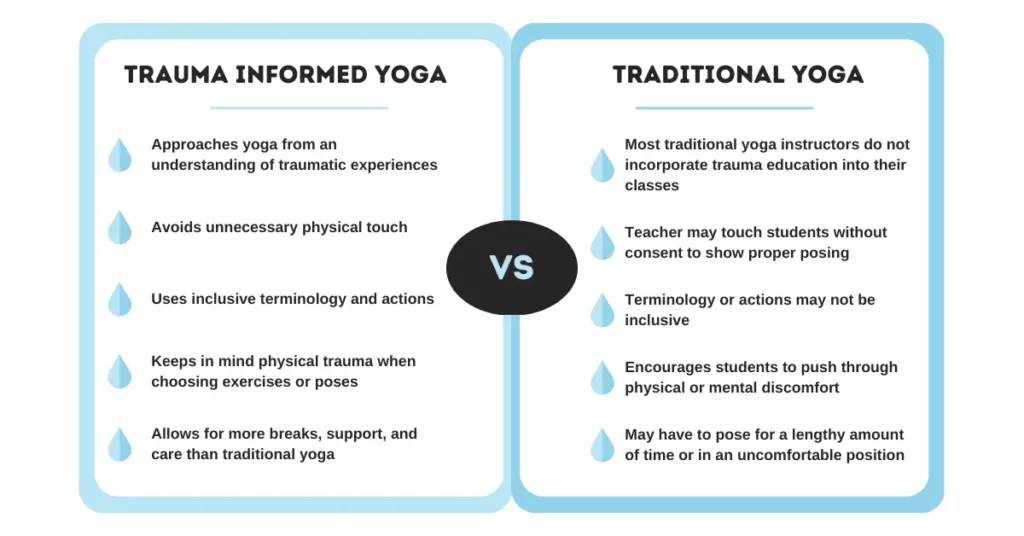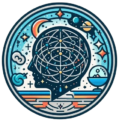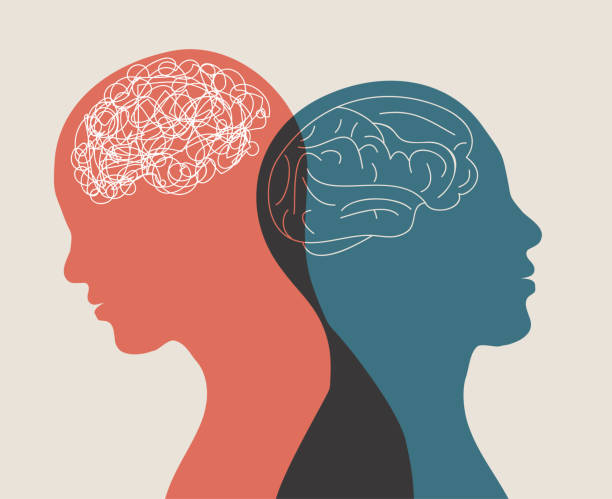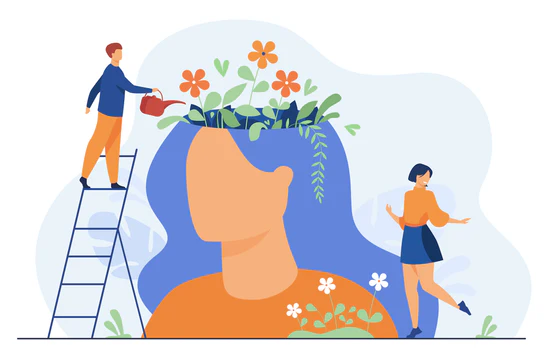Introduction
Let’s be honest: therapy often conjures up images of sitting on a couch, unpacking feelings with a therapist’s gentle prompts. While talk therapy (or “psychotherapy”) is incredibly valuable, it’s not the only route to mental wellness. Imagine healing your mind through splashing paint on a canvas, wandering among towering trees, or even drumming in a circle with friends. Sounds more like an adventure than a therapy session, right?
Read More- Change Your Narrative
Alternative Mental Health Practices
Well, these are just some of the alternative mental health practices gaining popularity worldwide. They offer exciting, creative, and sometimes ancient ways to understand and heal our mental health — often bypassing words entirely.
1. Expressive Therapies
Sometimes, feelings are so complex, tangled, or deeply buried that words feel clumsy or limiting. Expressive therapies tap into the healing power of creative expression, allowing individuals to communicate emotions nonverbally.

What are expressive therapies?
This umbrella term includes art therapy, music therapy, dance/movement therapy, and drama therapy. Instead of talking, participants create or move their way through emotional blocks.
Why does it work?
Art and movement activate different brain regions than language. This can help access memories and feelings too difficult to verbalize (Slayton, D’Archer, & Kaplan, 2010). For example, painting colors and shapes may reveal internal states before a person even consciously understands them.
Fun fact
Legendary artist Frida Kahlo, known for her vivid and emotionally charged paintings, reportedly used art to process intense physical and psychological pain. Though not formally called art therapy, her work demonstrates the medium’s healing potential.
Science backs it
Slayton et al. (2010) reviewed 37 studies on art therapy and found consistent benefits in reducing anxiety, depression, and trauma symptoms across age groups.
How to try it?
Grab some crayons or clay, and let your instincts guide you. No rules, no pressure — just expression.
2. Nature Therapy and Forest Bathing
The idea of healing by simply spending time outdoors isn’t new, but scientific interest has skyrocketed recently. Forest bathing — or Shinrin-Yoku in Japanese — involves immersing yourself in a forest environment to promote relaxation and reduce stress.

What happens in your body?
Studies show forest exposure lowers cortisol (the stress hormone), blood pressure, and heart rate, while boosting mood and immune function (Hansen, Jones, & Tocchini, 2017).
Why is nature so therapeutic?
Our ancestors evolved in natural settings, and modern urban life disconnects us from those environments. Nature offers gentle sensory stimulation — the rustling of leaves, bird songs, earthy smells — which can “reset” our nervous systems (Ulrich et al., 1991).
Practical tip
You don’t need a rainforest retreat! A 20-minute walk in a local park, focusing on sensory details, can trigger similar calming effects.
Bonus
People practicing nature therapy often report enhanced creativity and mental clarity — perfect for when you feel stuck.
3. Adventure Therapy
For some, the best therapy is an adrenaline rush and fresh air combined. Adventure therapy uses structured outdoor activities like hiking, rock climbing, or canoeing to foster personal growth and social skills.
Who benefits?
Often adolescents or people recovering from trauma, addiction, or social anxiety participate. The physical challenge promotes resilience, while group activities build trust and communication.
Real-world example
A study with at-risk teens engaging in wilderness expeditions reported improved self-esteem and decreased depressive symptoms after several sessions (Gass, Gillis, & Russell, 2012).
Why does it work?
Adventure therapy combines physical exertion, exposure to nature, social support, and problem-solving — a potent mix for boosting mental health.
4. Trauma-Sensitive Yoga
Trauma leaves not just emotional scars but also physiological imprints. Many survivors of trauma experience disconnection from their bodies or difficulty regulating emotions. Trauma-sensitive yoga (TSY) modifies traditional yoga practices to create a safe, empowering environment for healing.

What makes TSY different?
It emphasizes choice, non-judgment, and body awareness. Instead of forcing poses, instructors encourage participants to listen to their bodies and honor boundaries.
Scientific support
Van der Kolk et al. (2014) found that trauma-sensitive yoga significantly reduced PTSD symptoms compared to control groups receiving only standard care.
Why does yoga help trauma survivors?
Yoga can retrain the nervous system, teaching self-regulation through breath control and mindful movement (Emerson et al., 2009). It’s a way to regain ownership of one’s body after trauma.
Fun fact
Yoga’s roots go back thousands of years and have always connected mind, body, and spirit — a holistic approach that’s gaining renewed respect in modern mental health.
5. Indigenous and Traditional Healing Practices
Around the world, indigenous cultures have developed diverse healing methods addressing mental, emotional, and spiritual health. These practices are increasingly recognized for their depth and efficacy.
Examples include
- Ayahuasca ceremonies- Using plant-based psychedelics under guided conditions to facilitate deep psychological insight and healing (Riba et al., 2006).
- Drumming circles- Using rhythmic music to induce trance states and emotional release (Wells, 2011).
- Narrative healing- Storytelling as a way to process trauma and rebuild identity (Gone, 2013).
Why they matter
These practices often treat mental health within a community and spiritual context, contrasting with Western individualistic models.
Science meets tradition
Studies exploring these approaches show promising results, but emphasize respecting cultural context and avoiding appropriation.
Your Mental Health, Your Way
Mental health care is not one-size-fits-all. While traditional psychotherapy is invaluable, alternative therapies open doors to creative, body-based, and culturally rich ways of healing. Whether you pick up a paintbrush, take a forest stroll, climb a mountain, roll out a yoga mat, or explore indigenous wisdom — healing can be an adventure tailored to you.
The key is curiosity and openness: mental wellness is a journey, not a single destination. And sometimes, the best therapy is the one that feels like play.
References
Emerson, D., Sharma, R., Chaudhry, S., & Turner, J. (2009). Trauma-sensitive yoga: Principles, practice, and research. International Journal of Yoga Therapy, 19(1), 123-128.
Gass, M. A., Gillis, H. L., & Russell, K. C. (2012). Adventure therapy: Theory, research, and practice. Routledge.
Hansen, M. M., Jones, R., & Tocchini, K. (2017). Shinrin-yoku (forest bathing) and nature therapy: A state-of-the-art review. International Journal of Environmental Research and Public Health, 14(8), 851. https://doi.org/10.3390/ijerph14080851
Riba, J., Rodríguez-Fornells, A., Strassman, R. J., & Barbanoj, M. J. (2006). Psychometric assessment of the Hallucinogen Rating Scale. Drug and Alcohol Dependence, 85(1), 48-55. https://doi.org/10.1016/j.drugalcdep.2005.03.016
Slayton, S. C., D’Archer, J., & Kaplan, F. (2010). Outcome studies on the efficacy of art therapy: A review of findings. Art Therapy, 27(3), 108-118. https://doi.org/10.1080/07421656.2010.10129660
Ulrich, R. S., Simons, R. F., Losito, B. D., Fiorito, E., Miles, M. A., & Zelson, M. (1991). Stress recovery during exposure to natural and urban environments. Journal of Environmental Psychology, 11(3), 201-230. https://doi.org/10.1016/S0272-4944(05)80184-7
Van der Kolk, B. A., Stone, L., West, J., Rhodes, A., Emerson, D., Suvak, M., & Spinazzola, J. (2014). Yoga as an adjunctive treatment for posttraumatic stress disorder: A randomized controlled trial. Journal of Clinical Psychiatry, 75(6), e559-e565. https://doi.org/10.4088/JCP.13m08561
Wells, D. (2011). Rhythms of recovery: Drumming and trauma therapy. Journal of Music Therapy, 48(3), 278-304. https://doi.org/10.1093/jmt/48.3.278
Subscribe to PsychUniverse
Get the latest updates and insights.
Join 3,022 other subscribers!
Niwlikar, B. A. (2025, May 27). 5 Important Alternative Mental Health Practices and Their Insightful Benefits. PsychUniverse. https://psychuniverse.com/alternative-mental-health-practices/



